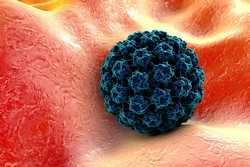Role of HPV in head and neck cancer
HHNC has an estimated global burden of approximately 700 000 cases per year, a third of which occur in India. Alcohol consumption, smoking and poor oral hygiene constitute key risk factors for HNC development. Accumulating evidence underscores an association of HNC with mucosal infection by human papillomavirus (HPV). The incidence of HPV-positive HNC varies by geographical region implicating environmental and/or lifestyle factors. The scope of the EU-funded HPV-AHEAD(opens in new window) (Role of human papillomavirus infection and other co-factors in the aetiology of head and neck cancer in India and Europe) project was to clarify the role of HPV infection in HNC. In this context, the consortium collected and analysed a large collection of patient samples from Europe and India, and associated them with epidemiological and clinical data. Results indicated that HPV antibodies can be detected many years before the development of the infection, rendering them key prognostic markers of oropharyngeal cancer development. Analyses of HNC tissues for HPV DNA and RNA showed that approximately 10-15 % of HNCs in Europe were associated with mucosal high-risk HPV infections, while in India the proportion was lower. Apart from this geographical link, researchers discovered that HPV-positive cases of HNC had a better prognosis than HPV-negative cases. Scientists found that the surrogate marker of HPV infection, p16INK4a was associated with bad prognosis in India. Further markers of HPV infection in HNC such as the SUMO-conjugating enzyme UBC9 and the transcription factor E2F1 were also identified. Although the overall incidence of HNC is decreasing in developed countries, it remains a severe problem in low- and middle-income countries. Establishing the HPV positivity of HNC can influence prognosis and potentially the treatment modality.







